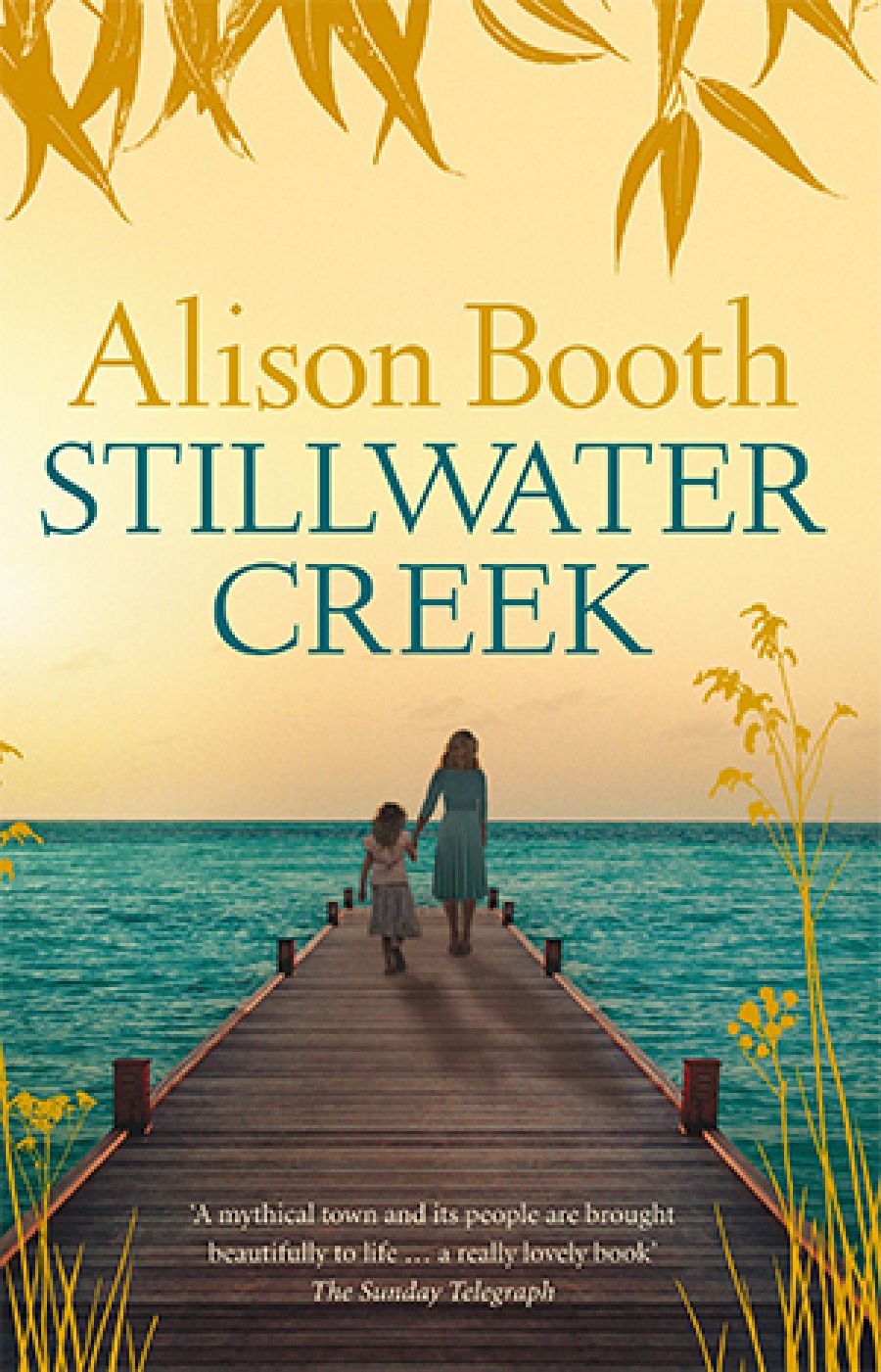
- Free Article: No
- Contents Category: Fiction
- Review Article: Yes
- Online Only: No
- Custom Highlight Text:
The sticker on the cover assured me that if I had enjoyed The Guernsey Literary and Potato Peel Pie Society I would ‘love’ Stillwater Creek. Had I been browsing the bookshop shelves, this would have been fair warning not to part with my money. Myriad readers obviously did love Mary Ann Shaffer and Annie Barrows’s international bestseller. Alexander McCall Smith certainly did: he chaired the committee that recently voted it The Times WHSmith Paperback of the Year. TGLAPPPS bored me so much that I failed to finish it, but I can see why McCall Smith, who writes novels in a similar vein and with similarly whimsical titles, championed it.
- Book 1 Title: Stillwater Creek
- Book 1 Biblio: Random House, $32.95 pb, 338 pp
Not so obvious was what it and Alison Booth’s début novel have in com mon, beyond the setting of a small post-war community where an outsider finds romance. However, in the wake of Gap Creek (2000), Barra Creek (2003) and Salvation Creek (2006), Booth might have shown similar originality by giving her novel a more memorable title.
But still waters, as they say, run deep, and there is more going on beneath the placid surface of the little coastal town of Jingera than meets the eye of new arrival Ilona Talivaldis and her young daughter, Zidra. It is 1957 and, following the death of her husband in Sydney, Ilona, a Latvian refugee, hopes to begin a new life in her rental cottage beside a lagoon. Someone might have advised her that a small, sleepy coastal community was not the best choice for someone hoping to find work as a piano teacher – by the end of the novel she has three pupils – but as the bus trundles into Jingera in the opening paragraph, Ilona’s first impression is of light: ‘Light glancing off the water, light sluicing the valley, light shaping the folds of the green hills that tumbled down to meet the sea.’ This brought to mind Ramona Koval’s recent rant on The Book Show against novels that start with descriptions of light, invariably ‘slanting’, which she calls the ‘clearing the throat’ part of a story that would be better cut. My prejudice is against novels that start with someone arriving on a bus, but light happens to be one of the things that Booth’s characters do tend to notice.
Zidra also notices the things that isolate the pair from the townsfolk: her mother’s accent and speech patterns, her odd clothes, and the nasturtium leaf sandwiches in her school lunches. Mother and daughter both notice that the inhabitants of Jingera include some fringe dwellers: Aborigines who live in shanties by the river. One of them, a lively, clever girl of Zidra’s age called Lorna, becomes her best friend until she is rounded up by ‘Welfare’ and carted off to a girls’ home. Booth might be drawing a shaky parallel here with Ilona, who was rounded up by the Nazis and forced into a concentration camp, but it seems more like a plot contrivance to isolate Zidra and put her at the mercy of a paedophile, who really does have the proverbial bag of lollies.
While the action can be contrived, Booth does better with her characters, Ilona and Zidra in particular. Others include Cherry, the perky, blonde barmaid wife of the jovial publican Bill Bates, who is having a secret lesbian affair with the schoolmistress, Miss Neville; George, the kindly butcher and his sour wife, who seems intent on preventing their son from taking up a prestigious scholarship; the rich but snooty property owner, Mrs Chapman, who engages Ilona to teach piano to her son (but no Shostakovitch, please – ‘too Russian’); and the wounded war hero.
As soon as Peter Vincent makes his appearance – tall, dark, blue-eyed, with an ‘angular face’, an ‘engaging grin’ and ‘spontaneous and graceful’ gestures – we know that he and Ilona will fall into each other’s arms at story’s end, especially since she initially decides he is arrogant and ‘insufferable’. Later, of course, she revises her opinion; Peter is one of the few townspeople sympathetic to the plight of the Aborigines and he tries, albeit unsuccessfully, to have Lorna released. They have the war in common: his scars are psychological, while the six-digit blue tattoo on her forearm hints at hers.
But hints are all readers get: ‘She had to keep all that stuff tightly buttoned up or she would fall to bits’; the word ‘Jew’ is never even mentioned. It is a gap in Ilona’s history that might have been filled by a more experienced author, or one less intent on protecting readers from what McCall Smith calls ‘nasty bits’. The same principle is at work when paedophilia rears its head and when Lorna is removed from her family; the lesbian affair, we are told, began three years previously after Miss Neville invited Cherry for afternoon tea; ‘after that, there had been no looking back’.
Booth stays on the surface, in spite of the fact that the story is told from multiple points of view. She could well have gone deeper. But that would have made it a different book. As it is, this is a well-written, frequently insightful but essentially undemanding romantic tale that will be enjoyed by many readers.


Comments powered by CComment